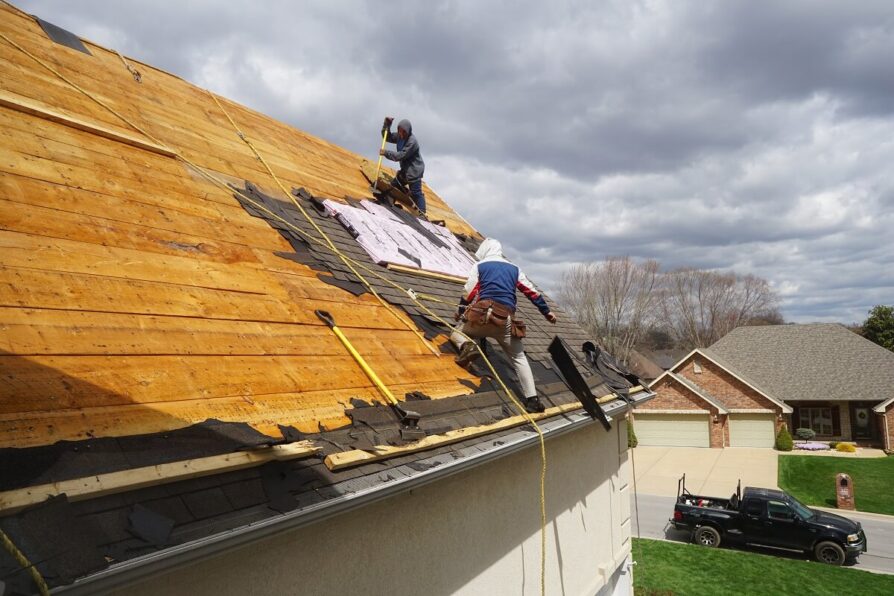
Steps to Properly Restore Your Roof for Maximum Protection
Restoring a roof is essential to maintaining the longevity and structural integrity of your home. Over time, roofs are subjected to various weather conditions, wear and tear, and damage from external factors. Hence, it becomes necessary to undertake regular restoration projects to ensure maximum protection for your property. In this guest post, we will discuss the steps you can take to restore your roof and enhance its durability properly.
1. Conduct a Thorough Inspection
Before embarking on any restoration project, it is crucial to conduct a thorough inspection of your roof. This step allows you to identify underlying problems such as leaks, damaged shingles, or weakened areas that need immediate attention. You can hire a professional roofing contractor or conduct the inspection yourself using proper safety measures. Just make sure they are local. For example, if your home is in Pakenham, look for companies conducting roof restoration in Pakenham to come and inspect your property’s roof.
2. Replace Damaged Shingles
After identifying damaged or missing shingles during the inspection, the next step is to replace them promptly. Damaged shingles can lead to water leaks and potential roof damage if left unattended. Ensure that you choose high-quality shingles that match your existing roof materials for a seamless appearance.
3. Clean and Remove Debris
Over time, dirt buildup and debris can accumulate on your roof’s surface and in gutters. Neglected debris not only affects the appearance of your home but also creates avenues for water stagnation that can lead to leaks and reduced drainage efficiency during heavy rainfall. Regularly clean the roof using appropriate tools and techniques, taking necessary safety precautions.
4. Repair Leaks and Seal Gaps
Identifying leaks early on is crucial in preventive maintenance because it helps address issues before they worsen over time. Inspect all areas prone to leaks, such as flashing around chimney stacks, vents, skylights, or other roof penetrations carefully. Apply a durable sealant specifically designed to repair leaks to ensure comprehensive protection.
5. Restore Flashings
Flashings are essential components that help with waterproofing, especially at vulnerable spots along the roof, such as valleys and intersections. Inspect all flashings and repair or replace damaged sections to prevent water intrusion and subsequent damage. Additionally, consider installing a waterproof underlayment for added protection in areas prone to heavy rain or snowfall.
6. Enhance Insulation
Proper insulation plays a vital role in maintaining a comfortable indoor temperature, preventing energy loss, and ensuring the longevity of your roof. Consider adding insulation materials such as foam boards or fibreglass between your roof decking and attic floor to improve thermal efficiency while reducing heating and cooling costs.
7. Apply Protective Coatings
One effective way of prolonging the life expectancy of your roof is by applying protective coatings specifically designed for this purpose. These coatings act as a shield against UV rays, extreme temperatures, moisture intrusion, and other potential sources of deterioration. Choose a coating suitable for your roofing material (e.g., reflective coatings for asphalt shingles) and ensure proper application as per manufacturer guidelines.
8. Maintain Proper Drainage
Blocked gutters and downspouts are significant contributors to roof damage due to water buildup during rainfall. Regularly clean out debris from gutters, ensuring that water flows freely away from your roofline. Consider installing gutter guards to prevent leaves and debris from clogging the drainage system.
Conclusion
Investing time and effort into restoring your roof not only extends its lifespan but also enhances its ability to protect your home from external elements effectively. By following these key steps – conducting regular inspections, replacing damaged shingles, cleaning debris, repairing leaks, restoring flashings, enhancing insulation, applying protective coatings, and maintaining proper drainage, you can ensure maximum protection for your property while minimising repair costs in the long run.
Remember that if you are uncertain about any aspect of roof restoration or lack the necessary skills or experience to carry out the task safely on your own, thereby putting yourself at risk, it is always best to consult with professional roofing contractors. With their expertise, you can rest assured that your roof restoration project will be executed seamlessly and effectively. Stay proactive in maintaining your roof’s condition in order to safeguard the durability and value of your home.

